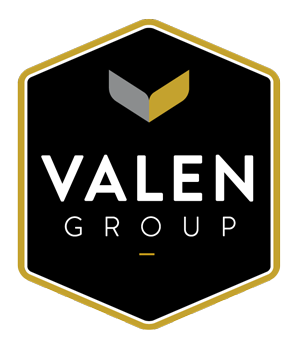From our experience, these areas are common problems that create confusion and inefficiency with innovation teams, if not addressed:
- Lack of a Clearly Defined Growth Strategy.
Growth strategy is the prerequisite that sets the direction and defines resource needs based upon one of the types of innovation including sustaining, adjacent, and transformational innovation. Understanding the growth goal requirements necessary or available to meet the intended growth target. Of course, mixing of these strategies, such as innovating and also licensing technology or other capability from a partner or acquiring a business that then requires innovation. There needs to be clarity as to the contribution the innovation function will provide towards growth targets, such as topline revenue. Then that innovation plan vetted to determine likelihood of meeting the objectives. This clarity can help significantly in the development of a sound innovation strategy. - Unsure if Organization is an Acquisition Company or Innovation Company
What defines a company or their strategy is a little more of a “head game” distraction for innovators. For acquisitions, it easier to merely think about what the plan is after an acquisition. It is defined in the reason why to acquire, e.g. understanding the goal. If the goal is topline growth, the next step will be to innovate to add or improve offerings, add marketing expenditures, add sales resources to expand distribution, etc. It is best to define areas to grow then identify what is clearly outside capability building and should be an acquisition or partnership which would then be in the domain of business development or M&A. For the remaining areas where innovation is clearly the growth strategy, allow acquisitions to be options in the approach to innovation and involve as well as empower the innovation team to analyze, explore and identify options. Whether you acquire and then innovate to scale or innovate and acquire assets would depend on the opportunity available. Acquisitions are never certain in strategy just like in developing a partnership, both sides have to agree so it is a possibility not a certainty in the early planning stage. Also, how large the acquisition may determine if innovation leads or business development. Many times, the smaller bolt-on or emerging company and product acquisitions are acquired and need innovation to extract the value defined in why to acquire. However, these acquisitions typically require several functions, like marketing, sales and innovation strategy and resource allocation, so just focus on what innovation resources are required and how it fits in the innovation portfolio to avoid distraction from these uncertain situations as you build and manage your portfolio. - Organizational Management Methods Lack Clarity
Without defining foundational elements to drive focus such as innovation principles, innovation pacing, and boundaries, it can be difficult to make choices or roadmap. These elements drive resource allocation decisions which maximize productivity, return on investment, and create unique value to the organization. Furthermore, processes, best practices and norms can help members of a team have the freedom they need to work effectively on innovation. When innovation is done differently every time without a normalization of stages, methods or steps, it actually hinders excellence and is not scalable. You can work like an entrepreneur and still follow a process for alignment check-in, resource allocation and value judgments. Even entrepreneurs, that from an outsider’s perspective might seem they have compete freedom, have investors and shareholders where the board and venture capital representatives check-in, agree to strategy and resource needs at least quarterly. - Portfolio Risk is Undefined
Individual innovation projects either succeed or fail. However, the portfolio is what should be judged not the single innovation project’s absolute success or failure. Otherwise, you are, more so, gambling on individual bets rather than managing a portfolio of risk adjusted innovation projects. It is important to type innovation by risk and area. This is portfolio management where elements such as the risk/return, number of projects, and time to market are balanced to return a topline growth value. Analyze the average portfolio return on innovation against resources allocated (ROI) and the portfolio sum is where to judge value. Sometimes, we find leaders who have a particular preference for a type of innovation such as transformational innovation that may come out in the form of asking how can we do more bold innovation? It is important not to overweight, meaning over risk, resources allocated to transformational innovation. Undue risk can burden an organization when there is such an appetite for growth creating unintended hubris during those periods when growth is needed too quickly to meet targets. Knowing what percentage of resources are allocated to high-risk projects is a critical number to manage this risk in innovation strategy as a leader. Mature organization might allocated up to 10% of all innovation resources to transformational innovation, but this choice is highly dependent on the growth strategy and goals. There are times where the need for an upward of 40% or more resources are allocated to higher risk/growth initiatives within early-stage markets that are high-change or high-uncertainty environments. Like the baseball analogy used many times to help understand risk – we typically want many more base hits, a good number of doubles and a few triples and home runs. Home runs come with a much higher percentage of strike outs meaning you didn’t even make it on base. - Not Managing Time-to-Market
Varying time to market and level of risk creates a very healthy portfolio. Roadmapping or staging the development and release of innovation removes the bottleneck of having too many projects to manage or launch or not enough and creates lumpy sales growth versus steady revenue or cash flow. Many times there portfolio decisions that are rules of thumb in an organization common and known to everyone, such as “we always deliver a big innovation one year followed by a smaller one next year.” When setting strategy it critical to understand the “why” behind portfolio decisions like this. Market or organizational goals might change and so adjustment to portfolio strategy decision may likely need to change as well so that resources can be added, reduced or the project makeup of the portfolio can be changed to throttle return and time to market.
Last, accuracy in practice versus the theory works best with the law of large numbers and with best practice norms in place. Changes in these factors can dramatically effect results especially smaller companies, divisions or brands with limited resources to create a properly balanced portfolio. Understanding these different situations can help to better set expectations and assess innovation results. Be careful not to really on single project success that do not correlate well to ongoing success, but focus on the overall process to manage innovation.
Not addressing these 5 issues can hinder not only development of strategy but the execution results of each and every innovation team’s project. Understanding these potential issues will help you better articulate what improvements the organization can do to deliver the innovation success you and your team desires.













